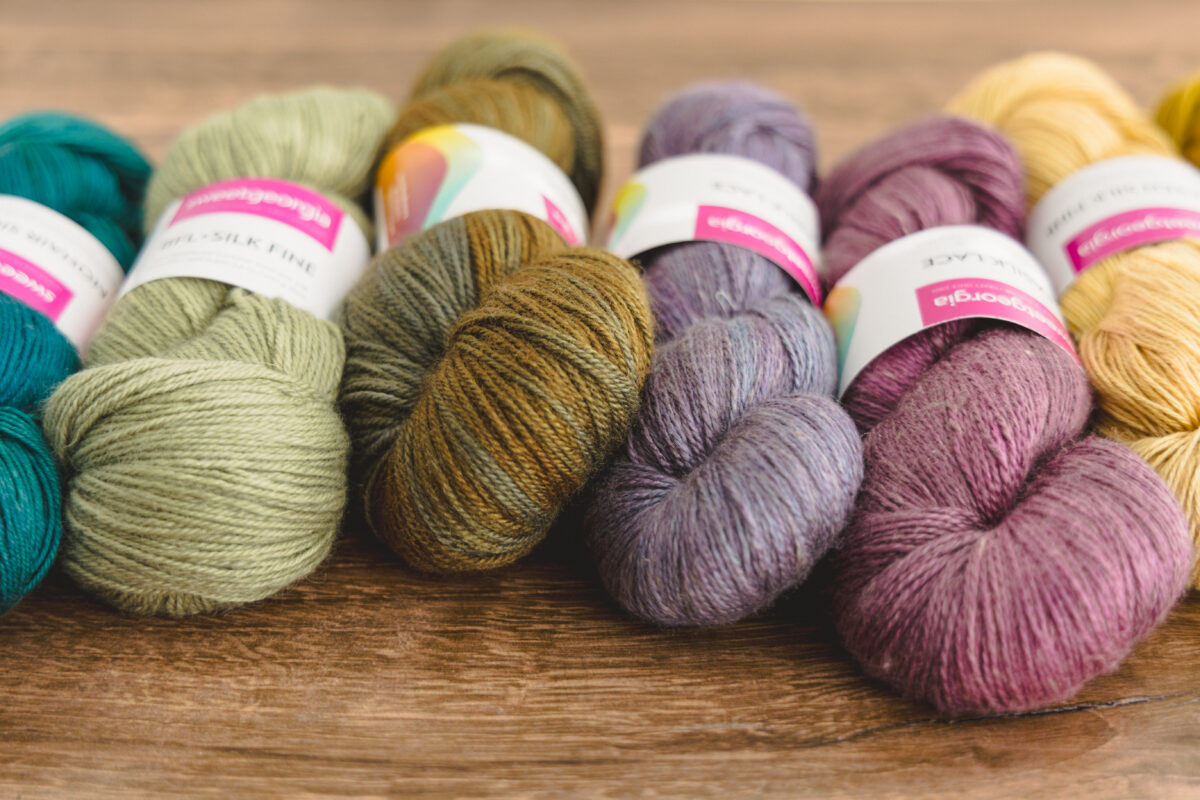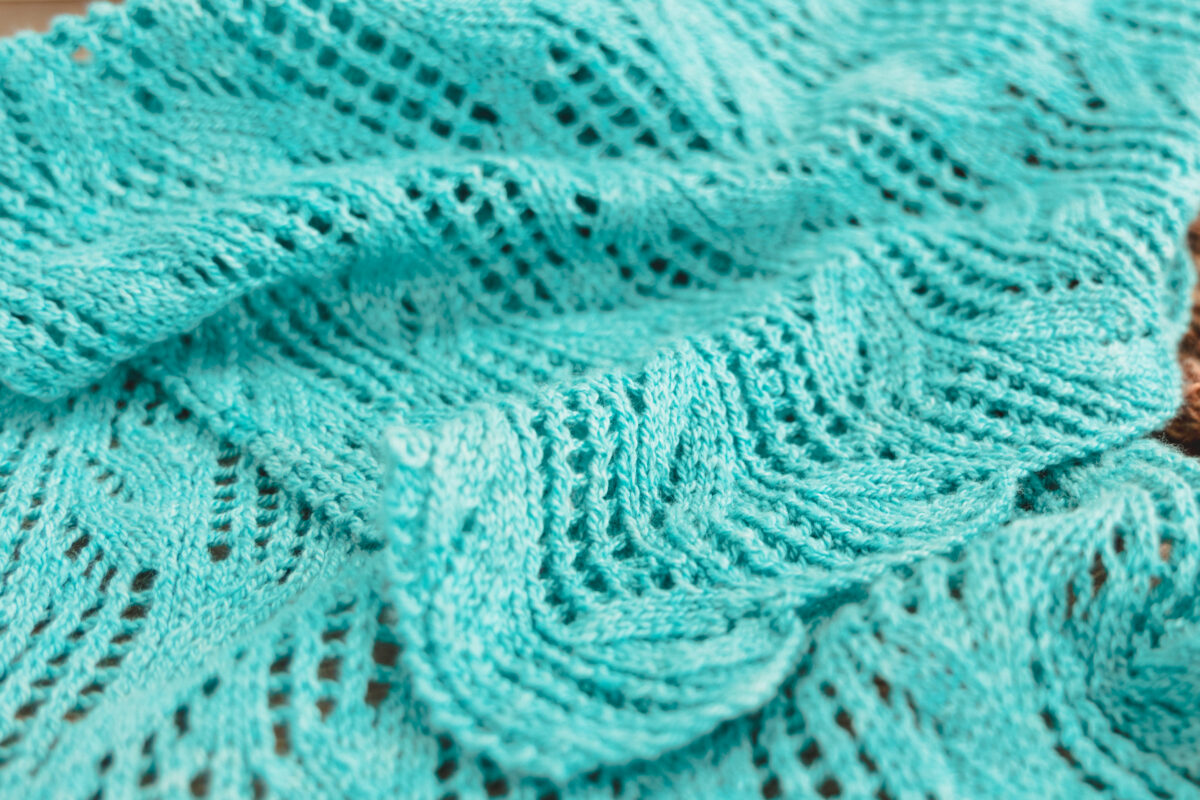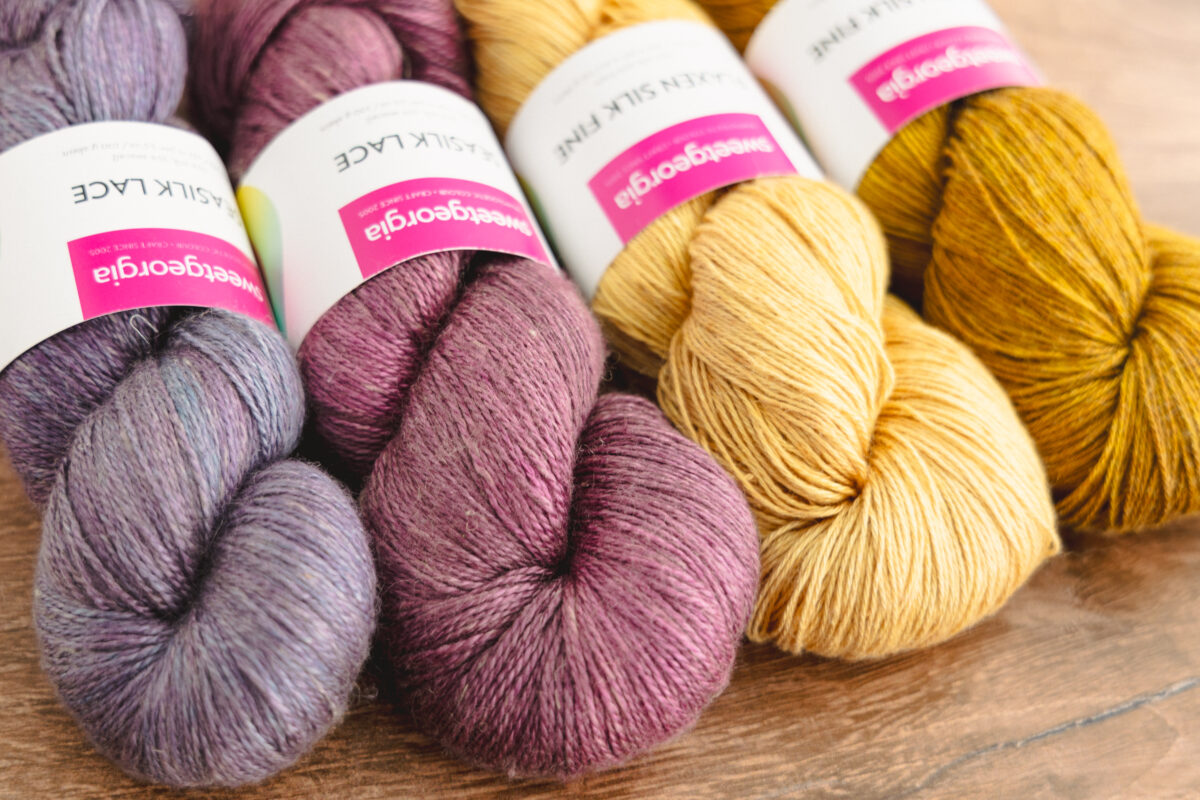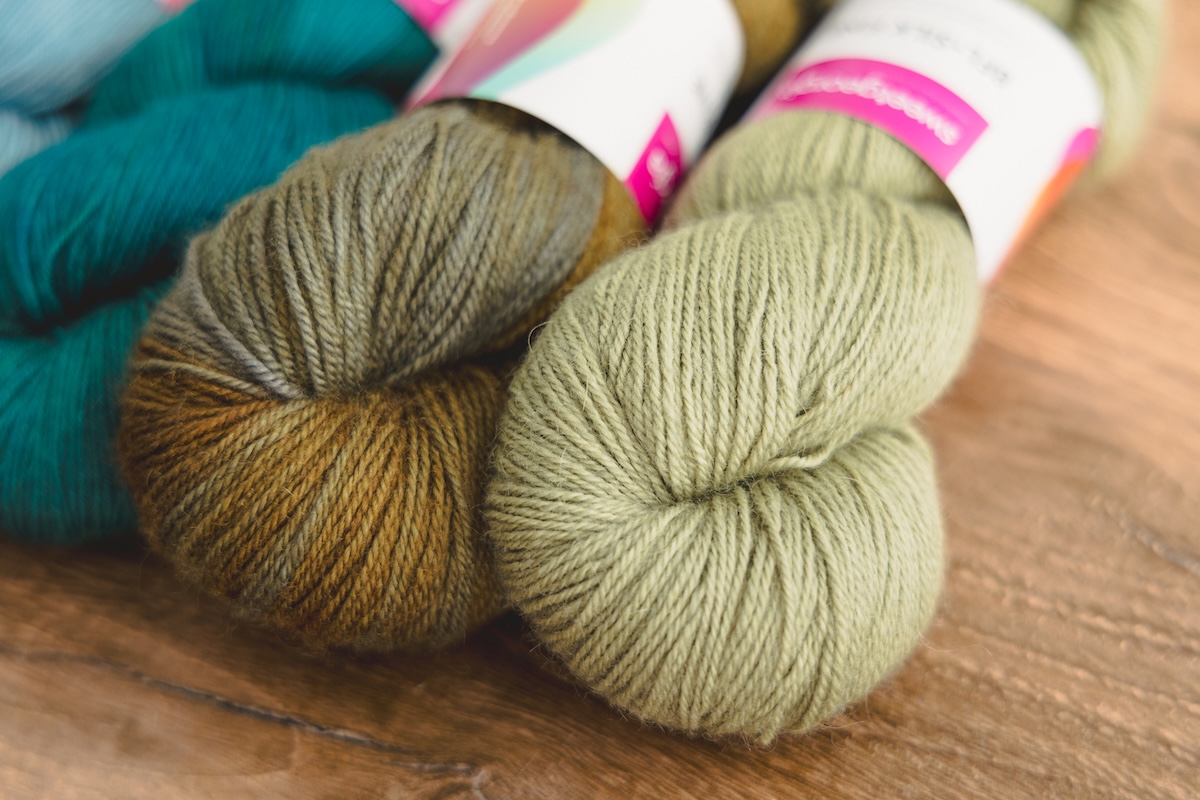Knitting & Crocheting with Silk
Silk is one of history’s most iconic fibres, prized by royalty and nobility the world over. Thanks to modern silk yarns, knitters and crocheters can enjoy it too! But with all the mystique around silk, some makers might be asking—what is working with silk actually like? This article will tackle the basics to get you started knitting or crocheting with silk and using its unique properties to elevate your projects.

Things to Consider When Knitting & Crocheting with Silk
Everyone knows that silk means luxury; But why? And what do makers need to keep in mind when working with and caring for it? There’s far more to discuss than would fit in this article, but here are the fundamentals to keep in mind when working with silk:
- Texture. The most famous property of silk is its texture—it’s renowned for its drape, softness, smoothness, and shine. Silk is harvested from the cocoons of silkworms, which produce long, strong fibres. Most silk or silk blend yarns will have a distinctive sheen and drape well. (Some yarns that include raw or recycled silk may be rougher in texture depending on how the silk is processed, but these are less common). The only drawback is that individual silk fibres don’t grip each other the way other animal fibres do, so the final fabric may be less cohesive overall, especially at a looser gauge.
- Strength. As mentioned above, silk fibres are quite durable—silk is considered one of the strongest natural fibres, which means that projects with silk will wear well and last a long time with the right care. That said, it weakens when wet, so be gentle when blocking. For 100% silk yarns, it’s often recommended to spray or steam block rather than wet block so as not to damage the fibres while pinning the project out.

- Elasticity. Silk is much less elastic than wool, which will spring back after being stretched—silk’s crispness means that it holds its blocked shape well, but 100% silk is not well suited to projects that need to bounce back.
- Insulation. Silk’s thermal properties are often overlooked, but they’re one of its biggest strengths. It adapts to body temperature well, keeping the wearer warm in the winter and cool in the summer; which means that a silk or silk blend project will be wearable for multiple seasons!
- Washability. Most silk or silk blend yarns aren’t treated to be machine washable, so it’s best to plan for silk projects to be hand wash only.
- Fibre blend. Due to the cost of producing it, 100% silk yarns are fairly rare (and expensive), so most yarns with silk content at your local yarn shop will be a blend. If you’re considering a silk blend for a project, be sure to take into account the qualities of the other fibre(s) in the blend. Also, pay attention to how much silk the blend contains—the smaller the percentage of silk, the more the characteristics of the other fibre(s) will influence the characteristics of the blended yarn. So just be aware of whatever properties that will bring to the table.

Strength and lustre are two of the key benefits of using silk in our yarns.
Common Silk Types
Just like wool, camelids, and other natural fibres, there’s actually more than one type of silk commonly used in commercial yarns. Silks can vary widely in quality depending on the manufacturer, but most silks you’ll see in a yarn store fall into one of two categories:
- Mulberry silk. Also known as Bombyx silk after the domesticated Bombyx Mori moth it’s named after, Mulberry silk is the type most frequently used in yarns for knitting and crochet. Mulberry/bombyx silk has the classic glossy sheen, slinky drape, and high strength that we associate with silk.
- Tussah silk. This is the most popular wild silk on the market. It has a more matte finish compared to Mulberry silk but offers the same beautiful drape and strength.
[New yarn]
Common Silk Blends
If you’re looking to incorporate silk into your knit and crochet projects, you’ll encounter the wonderful world of silk blend yarns. The possible combinations of silk and other fibres are nearly endless, so we’ll just be covering a few of the most common and some ideas of what to expect from them.
- Wool. Wool/silk yarns are one of the most common blends. Wool has many characteristics that silk does not, and vice versa, which means that a wool/silk blend gets the best of both worlds. Wool fibres are elastic and grip each other well, while silk fibres bring shine and drape. When combined, the resulting blend is versatile, sturdy, and easy to work with—particularly for garments. SweetGeorgia Yarns has multiple wool/silk blend yarns available, such as SweetGeorgia BFL+Silk Fine, SweetGeorgia BFL+Silk DK, and SweetGeorgia Merino Silk Lace.
- Mohair. Mohair/silk blends have become incredibly popular for knitting yarn in the last several years, particularly in laceweight yarns. Brushed mohair’s airy, fluffy texture contrasts well with the smoothness of the silk, and the strength of the silk keeps the brushed mohair from pulling apart. SweetGeorgia Silk Mist yarn is a classic mohair/silk laceweight yarn, perfect for delicate lace projects on its own, or held double with another yarn in garments or accessories. But mohair isn’t just fluffy—it can also be spun into a smooth, strong yarn that complements silk beautifully. SweetGeorgia Mohair Silk Sock and SweetGeorgia Mohair Silk DK combine the lushness of mohair with silk for a yarn with both density and drape.
- Cashmere. A cashmere/silk blend is the ultimate luxury, with two prized fibres in one. Known for its softness, cashmere blooms and grips to itself for a lush, cohesive fabric, while silk adds strength and shine to cashmere’s more delicate, matte texture. As one would expect, this blend is expensive, so it’s common to see these two fibres blended with wool. Straight cashmere/silk blends are often laceweight, as with SweetGeorgia CashSilk Lace. A cashmere/silk yarn would make a stunning lightweight garment, shawl, or scarf.

Enjoying Silk in Your Knit and Crochet Projects
As you’ve probably guessed, this article just scratches the surface of everything silk has to offer. There’s so much more to explore of its history and what it can bring to your projects—so be sure to get out there, experiment, and have fun! Once you’ve tried the shine, drape, and sheer beauty of silk, it’s hard to go back.
SweetGeorgia wants to ensure you have everything you need for your knitting, crocheting, and crafting success. Be sure to check out our growing library of fibre-craft workshops and tutorials at the School of SweetGeorgia. If you’re not yet an SOS member, use the code EXPLOREWITHUS to access a 14-day trial for just $1 — come and join the friendly community of multicraftual makers there!
The post Knitting & Crocheting with Silk appeared first on SweetGeorgia Yarns.
Comments
Post a Comment